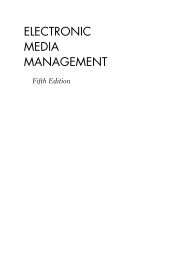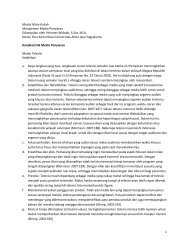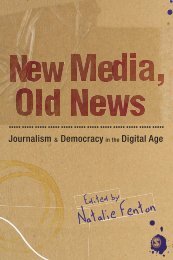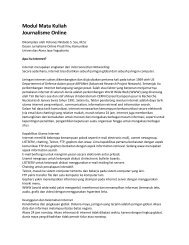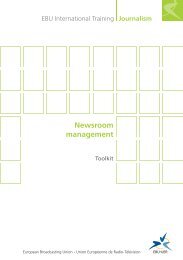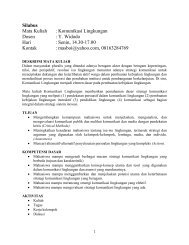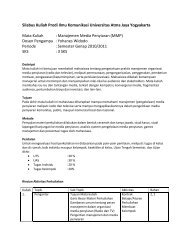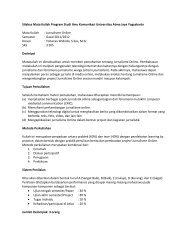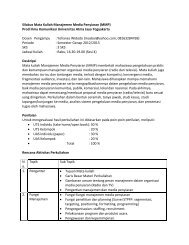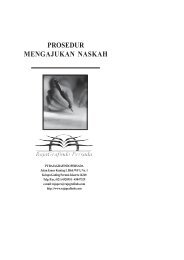Online Journalism - Ayo Menulis FISIP UAJY
Online Journalism - Ayo Menulis FISIP UAJY
Online Journalism - Ayo Menulis FISIP UAJY
Create successful ePaper yourself
Turn your PDF publications into a flip-book with our unique Google optimized e-Paper software.
164 <strong>Online</strong> <strong>Journalism</strong><br />
the next half decade. However, in an economy where consumers<br />
were rapidly gaining the expectation that most of the content,<br />
including their daily news, would be free, the strategy produced only<br />
dwindling traffic. Subscription was a business model which, outside<br />
of very specialised sectors such as share-tipping and commercial and<br />
financial information, including, successfully, both the Financial<br />
Times and the Wall Street Journal, was never sustainable for online<br />
publication. Even for the Wall Street Journal – by 1999 one of the few<br />
news providers on the web making a profit from online news – the<br />
venture hardly produced the expected bonanza. Of the 600,000<br />
registered users who used the initially free interactive edition only<br />
50,000 took up the offer for an annual subscription that was significantly<br />
cheaper than the print edition ($59 in 1999 and $29 for print<br />
subscribers). The Danish financial newspaper Boersen only offers<br />
(free) subscription to its online edition to subscribers to the print<br />
edition, many of whom take it up. The approach naturally attracts<br />
premium rates to advertising on the site. Another niche market that<br />
has been able to employ the subscription model with great success is<br />
political analysis. The National Journal’s online edition, NJ Cloakroom,<br />
charges $1,047 per annum to subscribers and attracts 600,000 page<br />
impressions per month (1999).<br />
The initial failure to attract paying subscribers by Microsoft’s<br />
online magazine Slate – in October 1998 the free section of the site<br />
attracted 400,000 readers against the 20,000 who subscribed – gave a<br />
clear indication to the online news industry that, for the majority of<br />
sectors, the subscription model had failed. What was needed was a<br />
range of mechanisms including subscription, which clearly<br />
succeeded in some niche markets, but which also allowed consumers<br />
to purchase specific content at affordable prices, perhaps a fraction<br />
of a penny for a single newspaper article, as well as advertising, ecommerce,<br />
sponsorships and affiliations and a culture which<br />
understood assets such as news and photography archives as valuebearing<br />
commodities.<br />
The general repurposing of news and news images as archive<br />
appeared within two years of the first online news providers. Titles<br />
found that these (comparatively shallow) archives often drew as<br />
much traffic as the main site and, in some cases, they began to invest<br />
in the long process of placing historical archives – some of which<br />
pre-dated the web by a more than a century – online.



